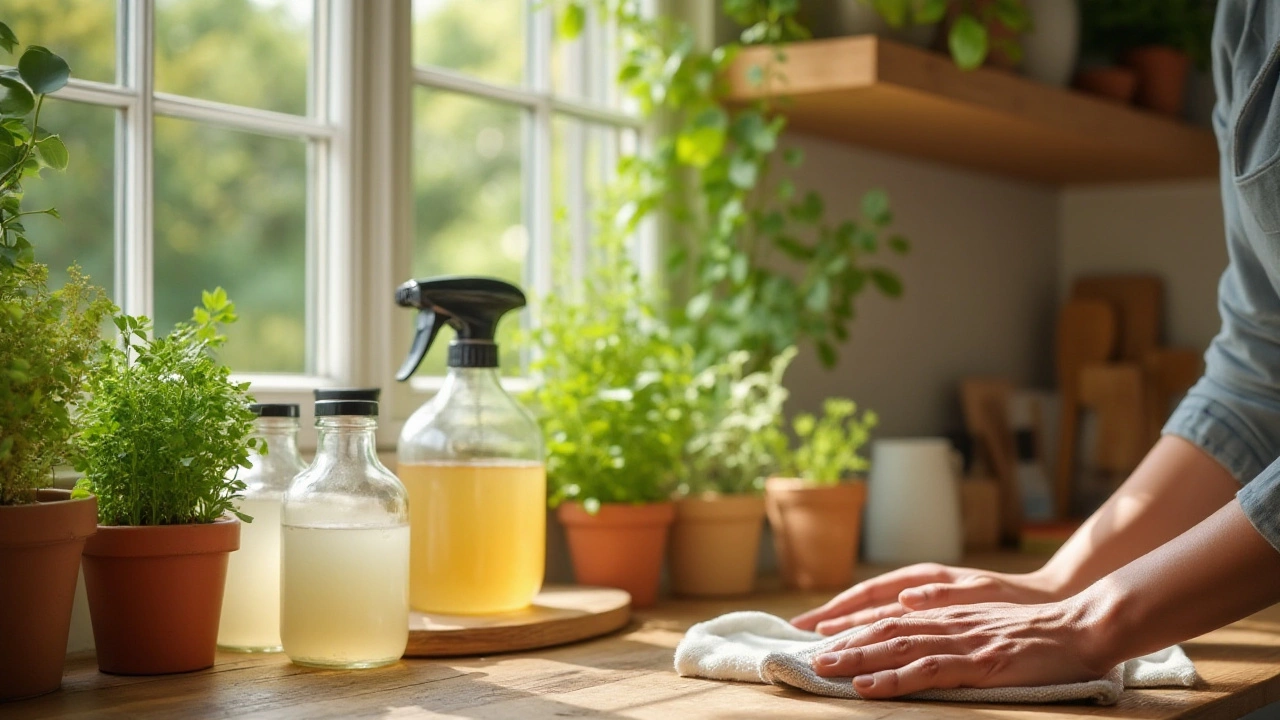Green Living Made Simple: Clean Home, Cleaner Planet
Going green doesn’t have to be a full‑on makeover. A few smart swaps in your cleaning routine can cut chemicals, save money, and make your house feel fresher. Below you’ll find practical tips you can start using today, plus a quick guide to choosing products that actually work.
Swap Out the Harsh Stuff
Most store‑bought cleaners are loaded with synthetic detergents, fragrances, and dyes that linger in the air and on surfaces. Reach for vinegar, baking soda, lemon juice, or a splash of castile soap instead. Mix one part white vinegar with water in a spray bottle for windows, tiles, and countertops – it cuts grime and leaves no residue. Baking soda works wonders on stubborn stains; sprinkle, let sit, then scrub with a damp cloth.
Pick Products That Mean Business
When you need a commercial product, look for labels that list biodegradable ingredients, plant‑based surfactants, and no phosphates. Companies that disclose full ingredient lists are usually safer for your family and the environment. A quick check on the Environmental Working Group’s guide can confirm whether a brand meets green standards.
Reusable tools are another hidden hero. Microfiber cloths trap dust and bacteria better than disposable wipes, and they can be washed and used again for months. Switch to a sturdy broom with soft bristles for sweeping instead of a plastic dust mop that sheds fibers.
Don’t forget the kitchen. Instead of spraying aerosol cleaners, fill a small bowl with warm water, a few drops of lemon‑scented castile soap, and a splash of vinegar. Soak a sponge, wring it out, and wipe down counters, stove tops, and cabinet doors. The citrus scent gives a fresh feel without synthetic perfume.
Bathrooms can stay sparkling with a simple brew of vinegar and tea tree oil. Spray the mixture on tiles, let it sit for ten minutes, then scrub with a brush. The oil adds a natural antimicrobial boost, while the vinegar breaks down soap scum.
Air quality matters too. Open windows when you can, and add a few drops of essential oil to a diffuser for a pleasant scent. Avoid air fresheners that contain phthalates—they’re linked to hormone disruption.
Finally, think about waste. Empty containers can be repurposed as storage jars, and many brands now offer refill stations for detergents and sprays. Refilling saves packaging and cuts down on plastic.
Green living is all about small, consistent changes. Start with one swap—like ditching the glass cleaner for a vinegar solution—and watch how easy it feels to keep expanding. Your home stays clean, your family stays healthier, and the planet gets a little break.

Eco-Friendly Home Cleaning Guide: Easy Tips for a Greener Home
Transforming your home into an eco-friendly haven doesn't have to be a daunting task. With a few simple changes, you can make your cleaning routines more sustainable and kind to the planet. Learn the benefits of using natural cleaning products and discover creative ways to reduce waste. Dive into practical tips that help protect the environment while keeping your home sparkling clean.
Read More